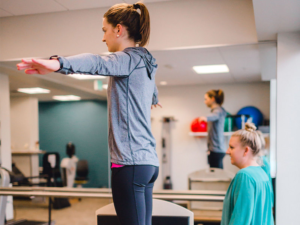Preserving bone health is a lot easier than you would think. Learn how factors including diet, activity, and lifestyle impact your bone mass.
The skeleton supports the rest of the body, protects internal organs, aids in muscle anchoring, and stores calcium. While it’s most important to lay the groundwork for a lifetime of bone health throughout childhood and adolescence, protecting your bone health is never too late.
What makes strong bones so important?
Old bone is continually being broken down and new bone is being produced as your skeleton reorganises itself. Because the body creates new bone at a faster pace than it dissolves old bone, your bone mass will increase with age. Most people attain their peak bone mass around the age of 30. After that point, bone remodelling will proceed, although bone loss will outweigh bone gain a bit.
How likely you are to acquire osteoporosis, an illness that causes bones to become frail and weak, depends on two factors: the amount of bone mass you have gained by the time you reach the age of 30 and the pace at which you lose bone mass after that. If your peak bone mass was higher, you would have more bone “in the bank,” making osteoporosis less likely to affect you later in life. Sometimes using products like the Thrive patch that support bone health can help prevent some of these problems
What variables affect bone health?
Numerous factors may influence a person’s bone health. Consider the following:
The amount of calcium you get through food.
Diets low in calcium may lead to low bone density, early bone loss, and an increased risk of fracture.
Inactive persons tend to have thinner bones, making them more susceptible to osteoporosis than their more active counterparts.
Consumption of alcoholic beverages and tobacco
Multiple studies have shown that smoking increases bone fragility. Similarly, there may be an increased risk of developing osteoporosis in women who frequently take more than one alcoholic drink per day, and in men who routinely consume more than two alcoholic drinks per day.
Sex
Since women typically have less bone tissue than males do, they are at a greater risk of developing osteoporosis.
Size
There is a risk of having insufficient bone mass as one ages if one is very thin (with a body mass index of 19 or lower) or has a small physical frame. The risk of osteoporosis increases as a result of this.
Age
Your bones’ porosity and fragility will increase with age.
Ancestry and skin colour’s impact
The risk of having osteoporosis is significantly increased for people of white or Asian descent. Furthermore, if there is a history of fractures in your family, having a parent or sibling with osteoporosis raises your risk of acquiring the illness as well.
Conclusion
Bone loss has been related to elevated levels of many hormones, including thyroid stimulating hormone. The considerable increase in bone loss in women after menopause is caused by a shift in oestrogen levels. An increased risk of osteoporosis is linked to amenorrhea, which is defined as the absence of menstruation for a lengthy period of time prior to menopause. Loss of bone mass in men may result from a decline in testosterone levels.


